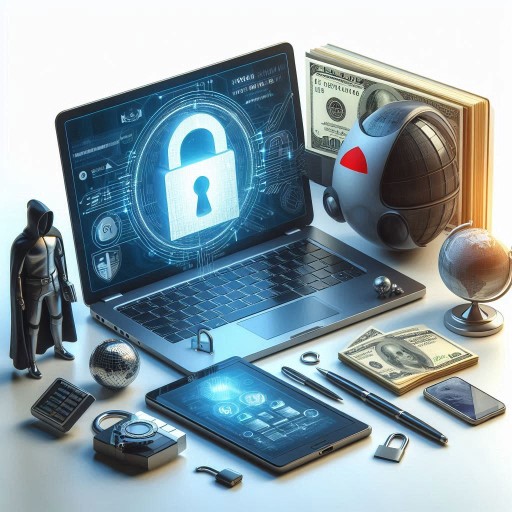TechTrend4u – The Internet of Things (IoT) is one of the fastest growing technologies that has great potential to change the way we live, work, and interact with our surroundings. By connecting physical devices to the internet, IoT enables communication and data exchange between devices without human intervention. In this article, we will explore how IoT works, its impact on various sectors, and how this technology is changing the world to become smarter.

What is the Internet of Things (IoT)?
The Internet of Things or IoT refers to a network of physical devices-such as sensors, home appliances, vehicles, and more-that are connected to the internet and can collect and share data. These devices are equipped with technologies such as sensors, chips, and software that allow them to “talk” to each other and take automated actions based on the data they receive.
A simple example of IoT is a smart thermostat that can adjust the room temperature based on user preferences or weather patterns. This is an example of how IoT can make everyday life easier and more efficient.
Read more: Smart Infrastructure: Building Smarter Cities
How Does IoT Work?
1. Devices and Sensors
The main components of IoT are devices and sensors that are connected to the internet. These devices can be anything from security cameras at home to machines in a factory. These sensors collect data such as temperature, humidity, speed, or even the user’s heart rate, and send the data to a central system or cloud.
2. Connectivity
The data collected by IoT devices is then transmitted over the internet network. This could be through Wi-Fi, Bluetooth, cellular networks, or other communication technologies. This connectivity allows devices to share data in real-time, which can then be analyzed or used to control other devices.
3. Data Analysis and Decision Making
Once the data is collected and transmitted, the next step is data analysis. This is done by intelligent software or algorithms, which can recognize patterns, detect anomalies, or predict future behavior. Based on the results of this analysis, the IoT system can make automated decisions, such as turning on the lights when it detects someone entering the room.
4. Automatic Action
Based on the data and analysis, IoT devices can take automatic actions without human intervention. For example, if a sensor detects that the garage door is open, the IoT system can send a notification to the homeowner’s cell phone or close the door automatically.
Read more: Big Data Analytics: Making Better Decisions
Impact of IoT in Various Sectors
Smart Home
One of the most popular examples of IoT is the smart home. In a smart home, devices such as lights, thermostats, door locks, and household appliances can be controlled remotely through smartphones or automation. For example, you can turn on the lights before arriving home or set the washing machine to start working at a certain time. This not only increases convenience but also helps save energy.
Health and Medical
In the healthcare sector, IoT is paving the way for wearable medical devices that monitor health conditions in real-time. For example, a heart rate or blood sugar level meter connected to a health app. This data can then be transmitted directly to the doctor, enabling faster diagnosis and more timely treatment.
Additionally, hospitals can use IoT to track medical equipment, monitor patient conditions, and manage drug inventory more efficiently. This helps to improve the overall quality of healthcare.
Industry and Manufacturing
In the industrial world, IoT is known as Industry 4.0 or the Internet of Industrial Things (IIoT). IoT allows factories to automate production processes, monitor machine conditions, and prevent breakdowns before they occur. For example, sensors in factory machinery can detect abnormal vibrations and alert technicians to perform maintenance before the machine breaks down.
In this way, IoT helps reduce downtime, improve operational efficiency, and save costs.
Transportation and Logistics
IoT is also bringing a major revolution in the transportation and logistics sector. Smart cars connected to the internet can collect data from roads, traffic, and weather to help drivers make better decisions. In addition, logistics companies can track their vehicle fleets in real-time, monitor cargo conditions, and optimize delivery routes to save time and fuel.
Smart Agriculture
Agriculture is also not left behind in utilizing IoT. Through smart farming, farmers can monitor soil conditions, humidity, temperature, and even plant health through internet-connected sensors. This data allows farmers to manage their fields more efficiently, save water, and increase crop yields.
Read more: Smart Cities: Building the City of the Future
IoT Challenges and Risks
While IoT offers many benefits, there are also challenges and risks to overcome. One of the biggest challenges is security. With more and more devices connected to the internet, the risk of cyberattacks also increases. IoT devices are often targeted because many of them have low levels of security.
In addition, privacy issues are also a concern. The data collected by IoT devices is often personal and sensitive, so it is important to ensure that it is properly protected.
Read more: Smart Public Transportation: More Efficient and Convenient
The Future of IoT
The Internet of Things is constantly evolving, and we have only seen the surface of its potential. In the future, we can expect more connected devices, more automation, and deeper integration into our daily lives. IoT will continue to play an important role in shaping a smarter, more efficient, and more connected world.
Conclusion
The Internet of Things is a technology that is changing the way we live and work. By connecting physical devices to the internet, IoT enables communication and automation that can improve efficiency, convenience, and security in various sectors. While challenges such as security and privacy remain, the future of IoT looks bright with the potential to continue transforming the world to be smarter and more connected.



